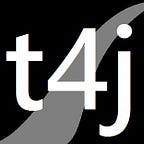The Ultimate Guide to Power and Influence: Everything You Need to Know by Robert L. Dilenschneider — A Review
The thought of someone who seeks power and influence brings forth images of one who is greedy, immodest, inflexible and insincere. The Ultimate Guide to Power and Influence by Robert L. Dilenschneider works against this stereotype as the author describes how to position yourself to gain power and influence, what to do with it when you finally get it, and how to hang on to it. The emphasis is always on maintaining your moral compass, doing the right thing, and committing to helping others. If you can grasp the basics — stating a clear objective, making it exciting enough to keep you going, moving the people you know (and even those you don’t know) along with society at large, and finding the drive to see it through — this book will fill in the details. Although the introduction felt like a random stroll through proof that things move rapidly, the importance of being a good person and the author’s own credentials, the chapters that follow are well organized. An appropriate subtitle might be “How to be a better person while still being successful.”
The first chapter emphasizes the importance of understanding yourself before beginning this journey, and this concept is echoed throughout the book. There are three versions of yourself to deal with — how you see yourself, how you really are, and how others see you. This forms the foundation for deciding who you want to be, and why you want influence. A clear idea of your moral compass is essential at this point — it should never change, regardless of the situations that come your way. Anyone who is out only for themselves will eventually end up alone. An idea that stood out for me — I know who my adversaries are, I understand their arguments, and I know how to deal with them. Mr. Dilenschneider illustrates the importance of authenticity with a story about Jack Welch of General Electric. Such stories, many of which are first-hand accounts, are the substance of the book.
The next three chapters deal with various aspects of networking — something we have all heard much about — but here the author’s examples begin to show their value. The story of how Hearst Corp. was able to purchase a 20% share in ESPN (a $167M investment now worth ~ $6B) because of a personal relationship between the CEO’s makes the point perfectly. Relationships are as important as competence for your career, and the popular concept of the “self-made person” is shown to be a myth. There is power in helping others not just for personal gain, but for creating a better community as well. The author illustrates his observations on networking with multiple examples involving people he has personally known or worked with. <continue reading>
